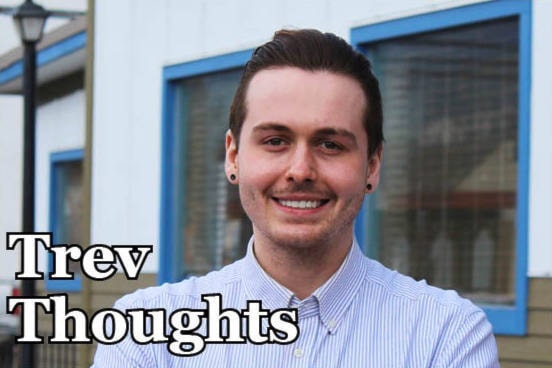All this rain has me thinking lots about the pile of rubble that used to be the recycling depot.
As someone who now lives on the outside of the Smithers fire protection area (interestingly enough, the house I’m staying at is the literal cut off — the house to our right is covered) I have been thinking a lot more about the risk of wildfires and just how vulnerable we are up here.
I’ve also been thinking about the role a journalist plays in an emergency.
When that fire broke out on May 9 I was getting my hair cut. I actually had joked to my hairdresser that day that the nature of my job was such that if some big story broke halfway through my trim I would have to cut my appointment short (no pun intended) and run out to some story, hair half trimmed with tiny chunks of reddish-brown flakes across my forehead.
Oh man, if only I knew what I was going to see when I stepped out of there.
My editor, being the resourceful individual he is, was already at the fire (he actually got there before the firefighters did) and so when I called him all we could really do amidst the sirens on his end is confirm a few simple things.
I asked if he was at the fire and he said he was.
I asked what he needed me to do in the newsroom to get the story up ASAP and he told me.
It’s situations like fires that remind me how unconventional of a job I’ve picked for a living.
I always joke to others that us journalists are the eccentrics who run towards a fire instead of away; towards the flashing lights of RCMP cruisers instead of back to safety.
But until that day I never really had to put myself in a situation where I was actually in harm’s way.
Fast forward to a few hours after the fire broke out to me being sent back to the scene to get some more photos.
As I exit my car the first thing I realized was that it was hot — noticeably hotter than it was downtown.
Taking in the uproar of the fire underscored by the yells of emergency workers, I began doing what I was sent there to do: snap some photos.
Within two minutes I’m told by a firefighter I have to head up to the public road.
OK, I get that, it’s private property and they need to do their job.
I walk up to Tatlow Road and think I’m good, but apparently not, and within minutes I’m once again told I have to move back, this time more aggressively.
I understand my rights as a citizen. I understand the concept of public and private property. I also understand that in emergencies, police, fire and other emergency services have the final say, but in that moment I was torn.
Not because I wanted to get photos out of spite, or because I wanted to have the most viral video of the event, but because I was simply trying to do my job as well.
In the end I was happy with the shots I got and, knowing my editor had gotten some great ones that we’d no doubt be able to use, headed back to my car.
Not because that’s what I wanted to do, but because getting thrown in the back of a police cruiser doesn’t seem like a fair trade for one or two decent photos.
In an emergency, we all have our role.
First responders are there to make sure people are safe. The public is there to stand just as far back as required and take photos, videos that they will then post to social media with little-to-no context into what’s going on and numerous inaccuracies (think that poor lady who was hit last week and everyone going onto Facebook and saying it a cyclist was killed — neither of those facts were true).
Then you have reporters. We certainly aren’t first responders, nor do we play the role of the general public.
Instead, we’re tasked with the role of getting close enough to the flames to get an enticing shot (what would have cut it 20 years ago isn’t good enough now that everyone and their 8-year-old seems to have an iPhone 7 or better) while also being accurate enough that those people standing behind the emergency tape have an understanding of what’s going on as they scroll through their news feed.
In short, we have to traverse the terrain of both the public and the emergency worker, all while being accurate and fast.
It isn’t easy, especially when you want to respect the emergency workers doing their job (and in situations like this, where lives can be at risk, it is the most important job there is, full stop).
As reporters, in emergency situations we are the first stop anyone not close enough to the actual emergency heads to for information on what’s going on. Even hours after the fire broke out we were getting calls like clockwork — less than every 10 minutes at one point — asking about what was happening.
In emergency situations, people want accuracy, they want aesthetics and they want you to be first with the information — none of those things are easy.
People say that a photo is worth a thousand words.
If that’s the case, then a photo of a burning down recycling depot is worth 100,000 clicks.
